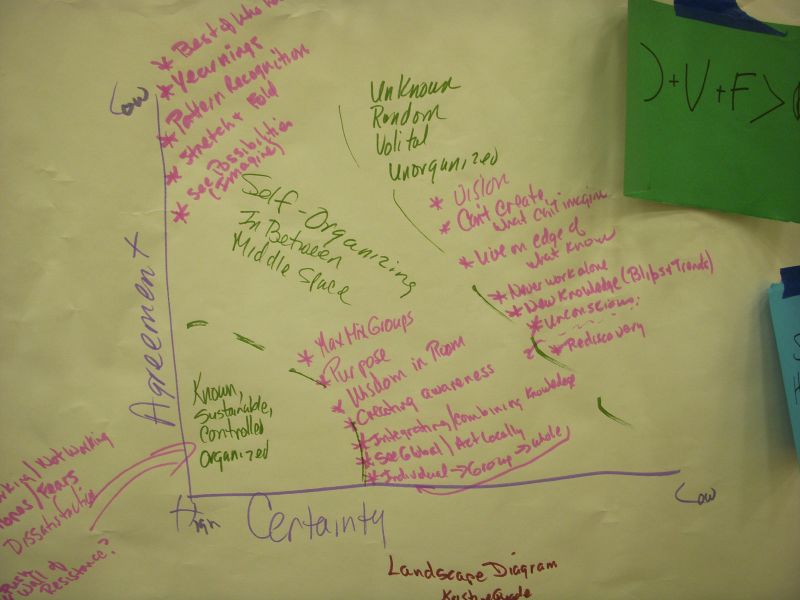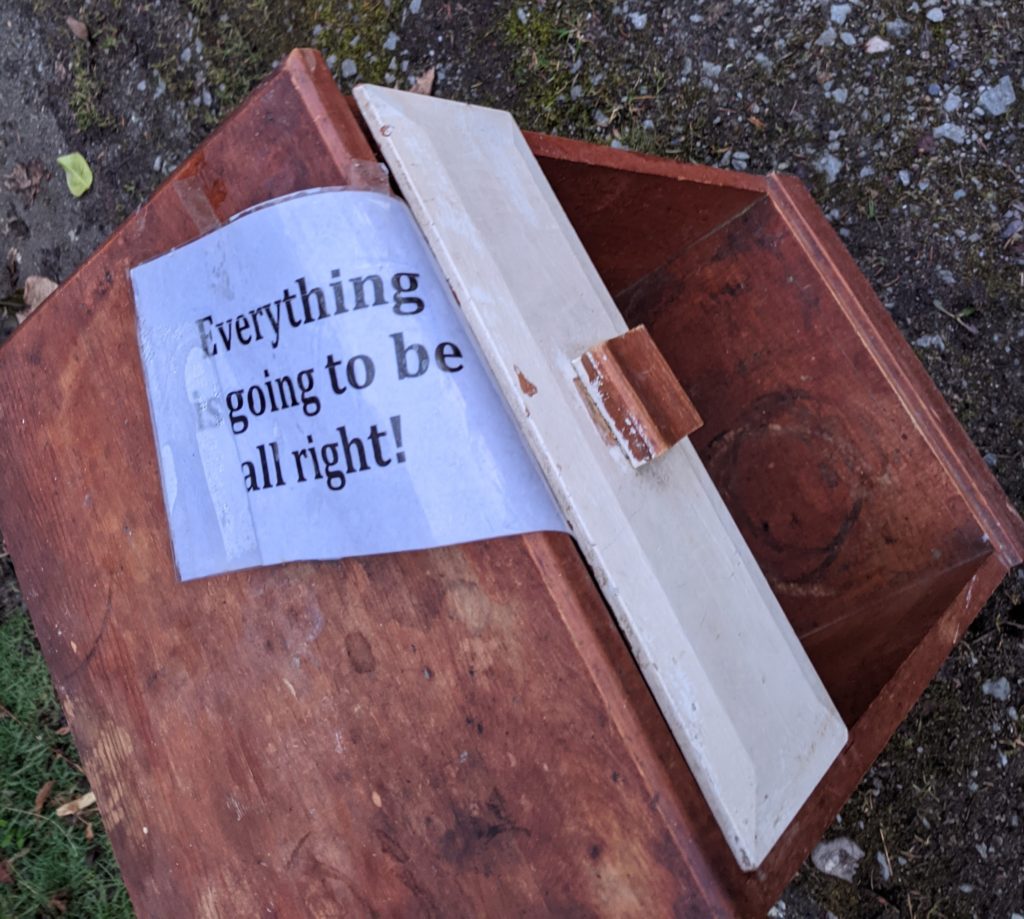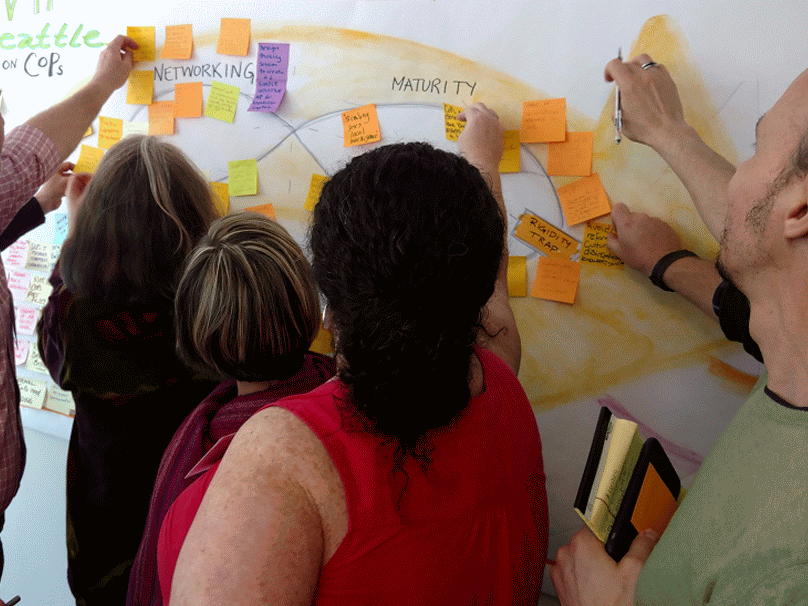I have started going through the 419 draft blog posts sitting in my WordPress dashboard. Some are simply links of things I found interesting, and alas, many of those links (2006, 2015) are now dead and those drafts are deleted. There are a few nuggets.
I came upon this little doodle that emerged from/by people at the 2008 gathering of process practitioners, Nexus for Change. (Nexus continues to grow and thrive focusing on the domain of whole systems change. There are three videos which try and tell the story of its evolution.)
The image is of an agreement/certainty matrix based on the work of Ralph Stacey. I continue to use it as part of my Liberating Structures repertoire and it has infused and informed many other process approaches.
What attracted me to resurrect this image and post it is that there is still such resonance for me today. Much of my work of the past five years has been in this area of low certainty and low agreement – the stuff in the upper right hand side of the image. And of course the invitation into each piece of work has often been in the lower left – clients thinking they were working in higher agreement and certainty, only to discover they were not.
This shift of understanding where we place and understand our work (play, relationships, etc.) is both liberating, daunting and, sometimes, frustrating. It calls upon different skills and expertise. The lessons of the COVID era illustrate this. Just when we think we understand what is happening and how we might respond, things change. We have to find that space between “just do something useful today ” and live with the uncertainty and “unknowing.”

From the Principles Chart on Flickr – Photo Sharing!
At the same time, this does not mean we ignore the lower left. There are things we can do with some amount of certainty. One that seems to have been somewhat abandoned is the choice to care about every person around us, and to act with kindness. Our uncertainty seems to have nudged many of us (USA I’m looking at you) towards self-preservation, or even outright selfishness, as if we deserve something. In uncertainty, all bets are off, including our past sense of entitlement.
What does this image tell me today? Keep ahold of the principles of our best selves and practice them together, with certainty and agreement. And let go of things that prevent us from seeing and experimenting with possibility in the areas of high uncertainty and disagreement. A classic wicked question and filled with potential dissonance. And possibility.
Part of a larger photo set from Nexus for Change in 2008 https://www.flickr.com/photos/choconancy/albums/72157604309184882



